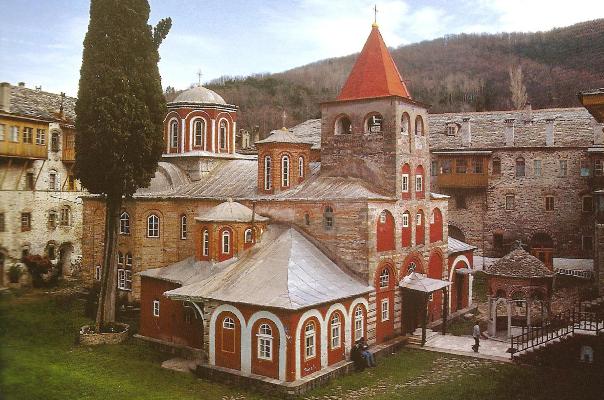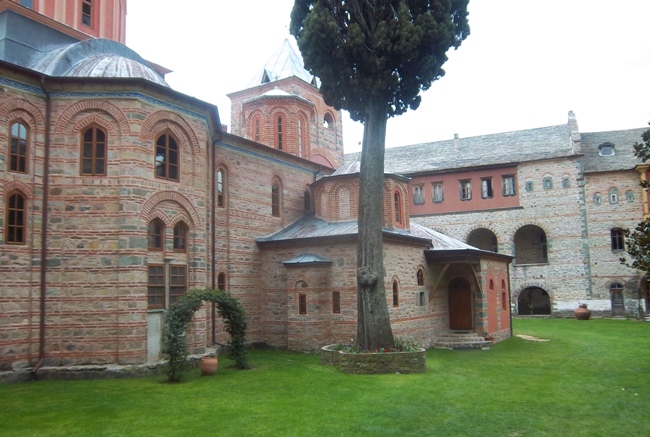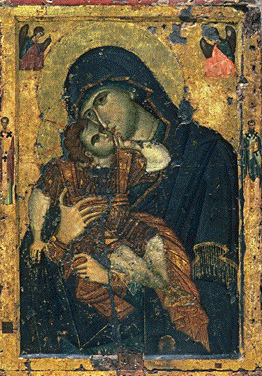
If it were to choose a monastery that has offered a lot for Hellenism and Orthodoxy, especially during the dark centuries of Ottoman rule, then it would be Philotheou monastery, because the teacher of the Nation Saint Cosmas of Aetolia was a monk there.
Before Saint Cosmas, equally important missionary work in Greece was provided by two other Philotheite monks, who were abbots of the monastery, Saint Dionysios of mount Olympus (founder of the homonymous holy monastery in Olympus) and Saint Symeon, who later on founded the Flamouriou monastery on Mount Pelion.
Philotheou was built at the biggest altitude (310 meters) of all the monasteries on Athos. It is distinguished among others for its beautiful grass around the Catholicon.
The monastery was founded in the last quarter of the 10th century by the monk Saint Philotheos, from whom it received its name. For many centuries it was left in obscurity, but it started to recover in the last centuries of the Ottoman rule. In the 18th century, the Greek sovereigns of Wallachia and Moldova donated enormous financial amounts to the monastery. As a consequence, hostels, cells, the Catholicon, chapels and a group of buildings of the monastery were then built.
In the 18th century, the teacher of the Nation, Saint Cosmas of Aetolia, became a monk in Philotheou and from there he began his touring to preach the word of God and to build churches and schools.

The Catholicon was built in 1746 and celebrates on the Annunciation of Theotokos. In the interior and exterior narthex, there are great frescoes of the Revelation and one depiction of Alexander the Great.
Inside the monastery, there are four chapels, while outside lie six ones. Two of them are dedicated to the Archangels, while one each to Saint John the Baptist, Saint Marina (in the spire), the Forty Holy Martyrs, Saint John Chrysostom and Saint Nicholas.
The Dining Hall is exactly opposite to the Catholicon. It was built and painted in the 16th century. Among the relics of the monastery, the most distinguished are a part of the Holy Wood, the right hand of Saint John Chrysostom and many more remains of other saints.
At the left iconostasis of the church is located the miraculous holy icon of the Theotokos Sweet-kissing (“Glycophilousa”), which is well known to the entire Orthodox Christianity for the sweetness of the Theotokos’s figure.

According to the holy tradition, during the period of Iconoclasm in the Byzantine Empire, pious Victoria, wife of the patrician Simeon, threw the icon into the sea to save it from destruction. The icon sailed the straits of Dardanelles and reached the east coast of Mount Athos, where it was found by the abbot of Philotheou monastery.
Among the miracles attributed to the holy icon was that of the rescue of a ship with pilgrims, which risked sinking in 1817 out of the Coast of Imbros Island during a dreadful storm. That time, the Theotokos appeared and holding the rudder herself she led the ship and the pilgrims to a safe port. The icon is celebrated triumphantly on the Sunday of St. Thomas.





